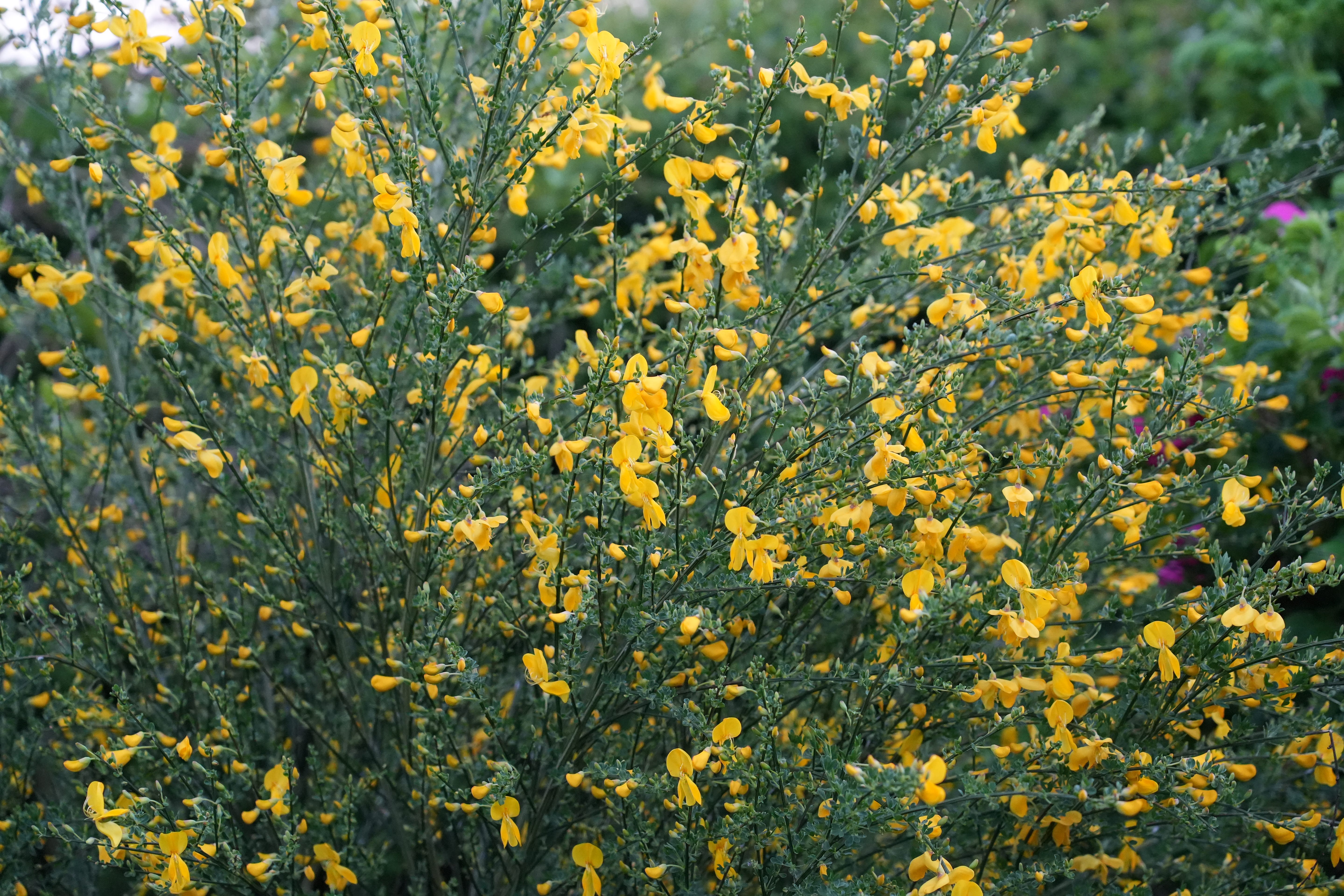
Broom gets its name from the old use of its tough stems with wiry ends. Cut, dried and upturned, with lots of stems tied together, broom was once used to sweep floors. Who knows why we all stopped using it.
A wild shrub in the pea family, Fabaceae, it will be familiar to walkers of rugged places, growing in the most inhospitable spots. Not so inhospitable for broom, with its upright sprays of stems and tiny, almost imperceptible moisture conserving leaves. It loves the places many other plants don’t.
In spring it transforms from inconspicuous to glowing star with a galaxy of brightest of bright yellow flowers. Large and numerous.
I’ve planted various brooms around our garden, a main thread. The wild species, even more than the cultivated varieties, is one of my favourite shrubs.

